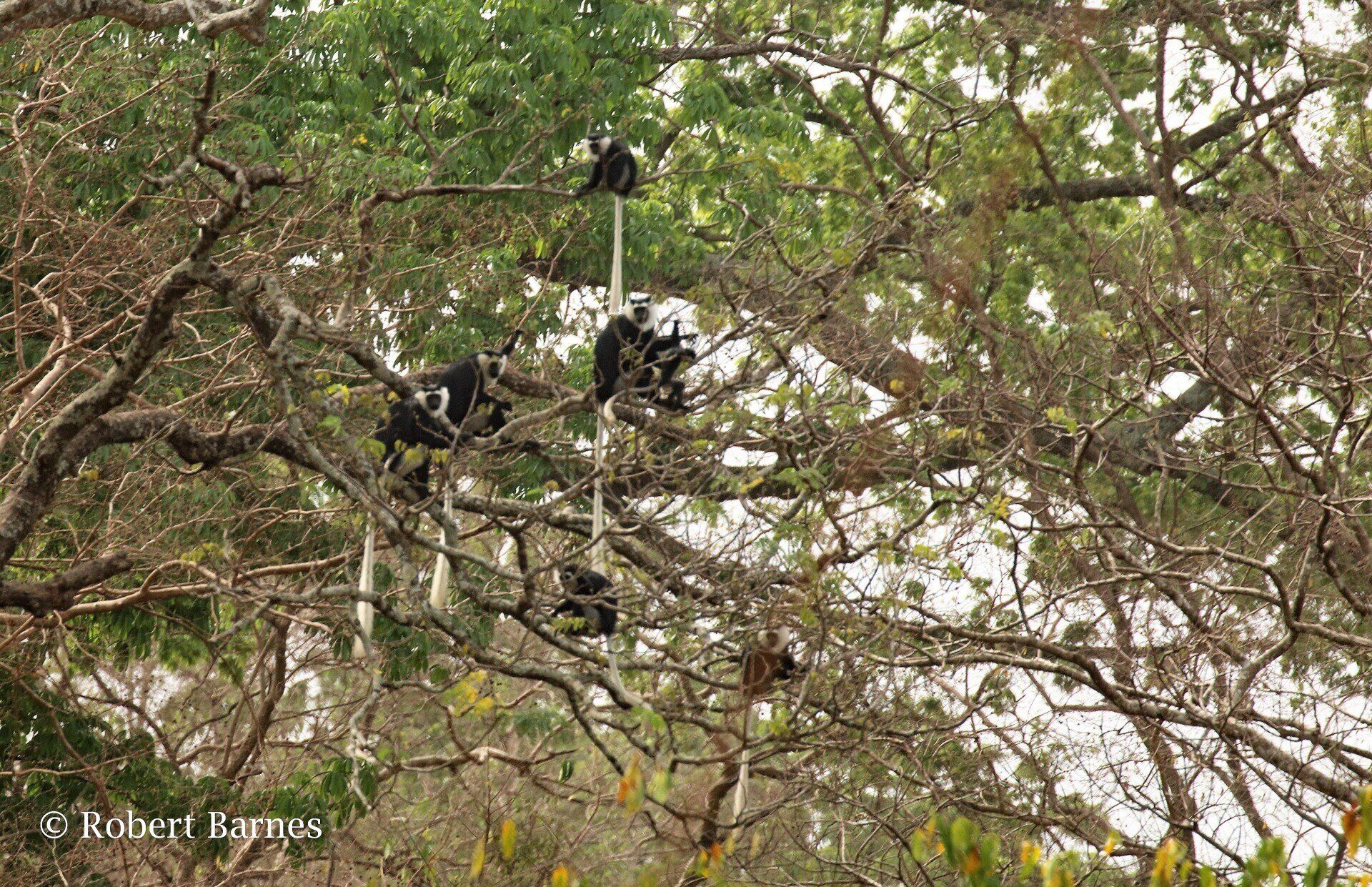This is a global rarity. There are only around one thousand White-thighed Colobus left in the wild (Matsuda Goodwin et al. 2020), most of which are to be found in Ghana. Just one strong population remains – at the Boabeng-Fiema Monkey Sanctuary in central Ghana. That’s where these wonderful images were taken by PAW Ghana supporter Robert Barnes.
The White-thighed Colobus Colobus vellerosus is part of the Black-and-White Colobus species complex. This species is also known as the Geoffrey’s Colobus or the Ursine Colobus. The Kalakpa reserve is also home to Patas, Green, Spot-nosed and Mona Monkeys, but colobus occupy a different ecological niche – the colobus is specially adapted to digest foliage, whilst all the other monkeys concentrate on more nutrient-rich foods such as fruit.



